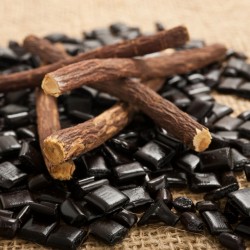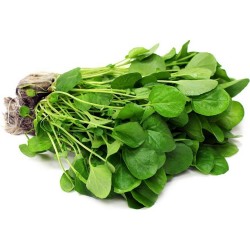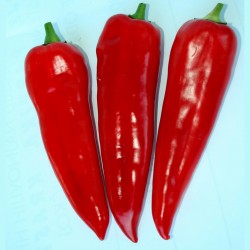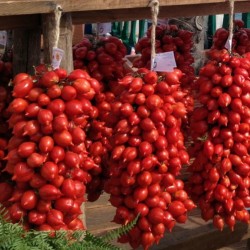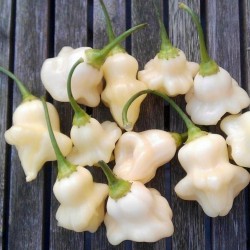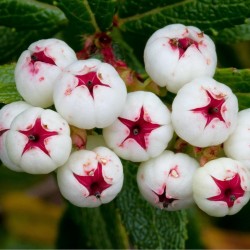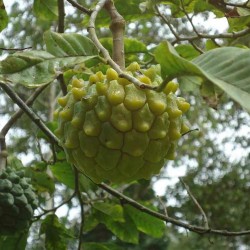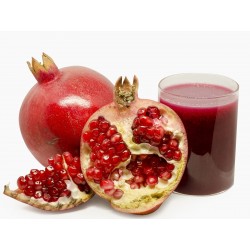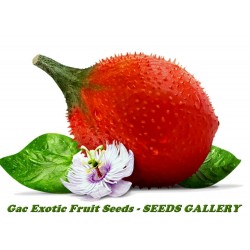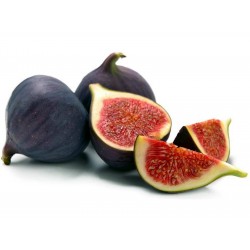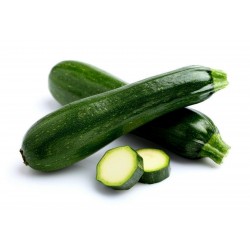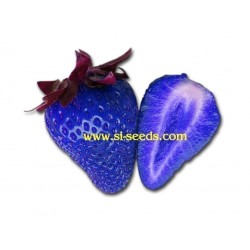Seeds Gallery Com,
5/
5
<h2><strong>Rodia Semințe (Punica granatum)</strong></h2>
<h2><span style="color: #ff0000;" class=""><strong>Preț pentru pachetul de 50 de semințe.</strong></span></h2>
<p><b>Rodia</b><span> </span>(<i>Punica granatum</i>) este un<span> </span>arbore<span> </span>mic sau<span> </span>arbust<span> </span>foios<span> </span>de înălțime până la 5–8 m. În fapt, termenul de rodie reprezintă fructul, iar planta se numește<span> </span>rodiu<span> </span>sau<span> </span>rodier. Acesta crește pe o arie care se întinde din<span> </span>Iran<span> </span>până la Munții Himalaya în<span> </span>India<span> </span>de nord și este cultivat și naturalizat în întreaga regiune<span> </span>mediteraneană<span> </span>inclusiv în<span> </span>Caucaz<span> </span>din vremuri antice. Este cultivat pe scară largă în Iran, India, zonele uscate din Sud-Estul Asiei, Malaya, Indiile Orientale, și Africa tropicală. Introdus în California de coloniștii spanioli în 1769, rodierul este acum cultivat mai ales în zonele uscate din California și Arizona pentru fructele sale exploatate comercial ca sucuri cu o popularitate în creștere din 2001.</p>
<h2><span class="mw-headline" id="Frunze_și_fruct">Frunze și fruct</span></h2>
<div class="thumb tleft">
<div class="thumbinner"><img alt="Rodia Semințe (Punica granatum)" src="https://upload.wikimedia.org/wikipedia/commons/thumb/d/db/Illustration_Punica_granatum2.jpg/120px-Illustration_Punica_granatum2.jpg" decoding="async" width="120" height="192" class="thumbimage" srcset="//upload.wikimedia.org/wikipedia/commons/thumb/d/db/Illustration_Punica_granatum2.jpg/180px-Illustration_Punica_granatum2.jpg 1.5x, //upload.wikimedia.org/wikipedia/commons/thumb/d/db/Illustration_Punica_granatum2.jpg/240px-Illustration_Punica_granatum2.jpg 2x" data-file-width="1421" data-file-height="2270" title="Rodia Semințe (Punica granatum)" />
<div class="thumbcaption">
<div class="magnify"></div>
Ilustraţie de<span> </span>Otto Wilhelm Thomé, 1885.</div>
</div>
</div>
<p>Frunzele<span> </span>sunt dispuse opus sau altern, sunt lucioase, înguste-alungite, întregi, au 3–7 cm în lungime și 2 cm în lățime.<span> </span>Florile<span> </span>sunt roșii-deschis, 3 cm în diametru, cu patru sau cinci petale (adesea mai multe la plantele cultivate).<span> </span>Fructul<span> </span>are dimensiune mai mare decât<span> </span>portocala<span> </span>și mai mic decât<span> </span>grapefruit-ul, 7–12 cm în diametru cu o formă hexagonală rotunjită, are o coajă roșie groasă și în jur de 600<span> </span>semințe.<sup id="cite_ref-1" class="reference">[1]</sup>, prezentând placentație parietală. Semințele și pulpa ce le înconjoară, numită fruct fals, sunt comestibile. Unele<span> </span>soiuri<span> </span>au pulpa de culoare violet.</p>
<h2><span class="mw-headline" id="Specii">Specii</span></h2>
<p>Genul Punica este reprezentat de doar două specii.</p>
<ul>
<li><i>Punica granatum</i>: este specia cea mai cunoscută, înaltă de până la 2–4 m, cu frunze caduce lanceolate si nu foarte mari, de o culoare verde lucitor, cu flori mari solitare sau reunite în grupuri la extremitatea ramurilor, de un roșu viu, cu varietăți de flori simple sau duble, ce pot fi de culoare roșie, roz sau albă ; înflorește în iunie-august și dă fructe comestibile de un gust acru.</li>
<li><i>Punica protopunica</i>: este o specie aproape necunoscută, în pericol de extincție, din care supraviețuiesc câteva exemplare în insula Socotra din Oceanul Indian ( Yemen), unde este<span> </span>endemică. Se prezintă ca un arbust de circa 3–5 m, cu flori de un roșu strălucitor și fructe care își schimbă culoarea din verde în roșu închis, ajunse la maturitate. Fructele sunt mai mici și mai puțin dulci.</li>
</ul>
<h2><span id="Cultivare_.C8.99i_utiliz.C4.83ri"></span><span class="mw-headline" id="Cultivare_și_utilizări">Cultivare și utilizări</span></h2>
<div class="thumb tleft">
<div class="thumbinner"><img alt="Rodia Semințe (Punica granatum)" src="https://upload.wikimedia.org/wikipedia/commons/thumb/7/7a/Punica.granatum%2804%29.jpg/220px-Punica.granatum%2804%29.jpg" decoding="async" width="220" height="165" class="thumbimage" srcset="//upload.wikimedia.org/wikipedia/commons/thumb/7/7a/Punica.granatum%2804%29.jpg/330px-Punica.granatum%2804%29.jpg 1.5x, //upload.wikimedia.org/wikipedia/commons/thumb/7/7a/Punica.granatum%2804%29.jpg/440px-Punica.granatum%2804%29.jpg 2x" data-file-width="640" data-file-height="480" title="Rodia Semințe (Punica granatum)" />
<div class="thumbcaption">
<div class="magnify"></div>
Frunze de rodier</div>
</div>
</div>
<div class="thumb tleft">
<div class="thumbinner"><img alt="Rodia Semințe (Punica granatum)" src="https://upload.wikimedia.org/wikipedia/commons/thumb/b/b3/Punica.granatum%2801%29.jpg/220px-Punica.granatum%2801%29.jpg" decoding="async" width="220" height="293" class="thumbimage" srcset="//upload.wikimedia.org/wikipedia/commons/thumb/b/b3/Punica.granatum%2801%29.jpg/330px-Punica.granatum%2801%29.jpg 1.5x, //upload.wikimedia.org/wikipedia/commons/thumb/b/b3/Punica.granatum%2801%29.jpg/440px-Punica.granatum%2801%29.jpg 2x" data-file-width="480" data-file-height="640" title="Rodia Semințe (Punica granatum)" />
<div class="thumbcaption">
<div class="magnify"></div>
Rodieri</div>
</div>
</div>
<p>Rodierul este o plantă rezistentă la secetă, și poate fi cultivată în regiuni uscate cu climă mediteraneană (cu ierni ploioase) sau în regiuni cu veri ploioase. În regiunile mai umede, rodierii riscă putrezirea rădăcinilor din cauza unor boli datorate unor ciuperci. Sunt plante tolerante la îngheț moderat, până la −10 °C.</p>
<p>Rodierul este originar din<span> </span>Persia<span> </span>(Iran) și se cultivă în<span> </span>Asia Centrală,<span> </span>Georgia,<span> </span>Armenia,<span> </span>Azerbaijan<span> </span>și regiunea<span> </span>Mediteranei<span> </span>de câteva milenii.<sup id="cite_ref-2" class="reference">[2]</sup></p>
<p>În<span> </span>Georgia<span> </span>și<span> </span>Armenia, la est de<span> </span>Marea Neagră, există crânguri de rodieri sălbatici în preajma unor așezări antice abandonate. Cultivarea rodiei are o lungă istorie în Armenia; resturi de rodie datând din anii 1000 î.e.n. au fost găsite în această țară<sup id="cite_ref-3" class="reference">[3]</sup>.</p>
<p>A fost identificat<span> </span>pericarp<span> </span>de rodie carbonizat în nivelele din<span> </span>Epoca Bronzului<span> </span>de la<span> </span>Ierihon, ca și în nivelele din<span> </span>Epoca Bronzului<span> </span>de la<span> </span>Hala Sultan Tekke<span> </span>în<span> </span>Cipru<span> </span>și<span> </span>Tiryns<span></span><sup class="noprint"><span>[<i>necesită citare</i>]</span></sup>. O rodie mare, uscată a fost găsită în mormântul lui<span> </span>Djehuty, servitorul Reginei<span> </span>Hatshepsut. Documente cu scriere<span> </span>cuneiformă<span> </span>mesopotamiene<span> </span>menționează rodiile de la jumătatea mileniului al treilea î.e.n.<sup id="cite_ref-4" class="reference">[4]</sup><span> </span>Planta este de asemenea crescută extensiv în<span> </span>China<span> </span>de Sud și<span> </span>Asia de Sud-Est, unde a ajuns fie pe<span> </span>Drumul Mătăsii, fie adusă de corăbiile comerciale.</p>
<p>Orașul antic<span> </span>Granada<span> </span>din<span> </span>Spania<span> </span>a primit numele de la acest fruct în perioada<span> </span>maură. Coloniștii spanioli au introdus mai târziu fructul în regiunea<span> </span>Caraibelor<span> </span>și<span> </span>America Latină, dar în coloniile engleze nu a avut prea mult succes: "Plantați-o lângă marginea casei, aproape de zid. Astfel va crește sănătos, va înflori frumos, și va face fructe în anii călduroși. Am douăzecișipatru pe un singur copac..." spunea<span> </span>Doctorul Fothergill<sup id="cite_ref-5" class="reference">[5]</sup><span> </span>Rodia fusese introdusă ca fruct exotic în Anglia cu un secol în urmă, de<span> </span>John Tradescant cel Batrân, dar nu a făcut fructe acolo, așa că a fost introdusă repetat în coloniile americane, chiar și în New England. A avut succes în sud: Bartram a primit un butoi de rodii și portocale de la un corespondent din<span> </span>Charleston, South Carolina<span> </span>în 1764.<span> </span>Thomas Jefferson<span> </span>a plantat rodieri la<span> </span>Monticello<span> </span>în 1771: îi avea de la<span> </span>George Wythe<span> </span>din Williamsburg.<sup id="cite_ref-6" class="reference">[6]</sup></p>
<h3><span id="Utiliz.C4.83ri_culinare"></span><span class="mw-headline" id="Utilizări_culinare">Utilizări culinare</span></h3>
<div class="thumb tright">
<div class="thumbinner"><img alt="Rodia Semințe (Punica granatum)" src="https://upload.wikimedia.org/wikipedia/commons/thumb/2/29/Pomegranate03_edit.jpg/250px-Pomegranate03_edit.jpg" decoding="async" width="250" height="188" class="thumbimage" srcset="//upload.wikimedia.org/wikipedia/commons/thumb/2/29/Pomegranate03_edit.jpg/375px-Pomegranate03_edit.jpg 1.5x, //upload.wikimedia.org/wikipedia/commons/thumb/2/29/Pomegranate03_edit.jpg/500px-Pomegranate03_edit.jpg 2x" data-file-width="1600" data-file-height="1200" title="Rodia Semințe (Punica granatum)" />
<div class="thumbcaption">
<div class="magnify"></div>
Fruct de rodie, desfăcut</div>
</div>
</div>
<div class="thumb tright">
<div class="thumbinner"><img alt="Rodia Semințe (Punica granatum)" src="https://upload.wikimedia.org/wikipedia/commons/thumb/9/9e/Pomseeds2.jpg/250px-Pomseeds2.jpg" decoding="async" width="250" height="245" class="thumbimage" srcset="//upload.wikimedia.org/wikipedia/commons/thumb/9/9e/Pomseeds2.jpg/375px-Pomseeds2.jpg 1.5x, //upload.wikimedia.org/wikipedia/commons/thumb/9/9e/Pomseeds2.jpg/500px-Pomseeds2.jpg 2x" data-file-width="823" data-file-height="805" title="Rodia Semințe (Punica granatum)" />
<div class="thumbcaption">
<div class="magnify"></div>
Seminţe de rodie</div>
</div>
</div>
<p>După desfacerea rodiei prin tăierea cu cuțitul, fructele false se separă de coajă și de structurile interne de susținere. Separarea fructelor false roșii poate fi simplificată prin efectuarea acestei acțiuni într-un vas cu apă, unde fructele false se depun pe fund, iar structurile de susținere plutesc. Întreaga sămânță se consumă crudă, deși se dorește doar partea cărnoasă din exteriorul ei. Gustul diferă în funcție de soiul de rodie și de nivelul de coacere. Poate fi foarte dulce sau foarte acru, dar în majoritatea cazurilor este undeva la mijloc, care este un gust caracteristic, asezonat cu note de<span> </span>tanin. Rodia bună de mâncat, mai puțin taninată, este cea care are coaja ușor ștearsă, ca și cum ar fi fost frecată de perete, cu urme albe, nu de un roșu puternic. Cele foarte roșii sunt foarte acre, putând fi folosite în salate.</p>
<p>Sucul de rodie este o băutură populară în<span> </span>Orientul Mijlociu, și este folosit și în bucătăriile tradiționale iraniană și indiană; în<span> </span>Statele Unite ale Americii<span> </span>a început să fie comercializat pe scară largă în 2002<span> </span>[4]. Concentratul de rodie este folosit și în bucătăria<span> </span>siriană. Siropul de rodii este îngroșat și îndulcit cu suc de rodie; este folosit și în<span> </span>cocktailuri. Înainte de răspândirea<span> </span>roșiilor<span> </span>în Orientul Mijlociu, rodia este folosită în multe mâncăruri persane; poate fi găsită încă în unele rețete tradiționale cum ar fi<span> </span><i>fesenjan</i><span> </span>(un sos gros din nuci și suc de rodie, de regulă servit cu carne de<span> </span>rață<span> </span>sau altă pasăre și orez) și<span> </span><i>ash-e anar</i><span> </span>(supă de rodie).[5]</p>
<p>Semințele de rodie sălbatică sunt uneori folosite drept condiment, și cunoscute sub numele de<span> </span><b>anardana</b><span> </span>(care în traducere din<span> </span>persană<span> </span>înseamnă semințe -<span> </span><i>dana</i><span> </span>- de rodie -<span> </span><i>anar</i>), mai ales în bucătăriile indiană și pakistaneză dar și ca înlocuitor de sirop de rodie în bucătăria persană sau cea din Orientul Mijlociu. Semințele sunt separate de pulpă, uscate timp de 10–15 zile și folosite la producția de<span> </span>curry<span> </span>sau alte condimente. Semințele pot fi și pisate pentru a evita ca semințele să rămână între dinți la consumarea felurilor de mâncare bazate pe acestea. Semințele de rodie sălbatică<span> </span><i>daru</i><span> </span>din<span> </span>Munții Himalaya<span> </span>sunt considerate cele mai bune surse ale acestor condimente.</p>
<p>În Turcia, Armenia și Azerbaidjan, rodia este folosită în mai multe moduri, mai ales sub formă de suc. În Turcia, sosul de rodie (turcă<span> </span><span lang="tr">nar ekșisi</span>) este folosit la salate, la marinarea cărnii, sau este băut. Semințele de rodie sunt și ele folosite în salate, în<span> </span><i>muhammara</i><span> </span>(pastă turcească de<span> </span>usturoi<span> </span>cu<span> </span>nucă) și în<span> </span><i>güllaç</i>, un desert turcesc. În Azerbaidjan și Armenia, rodia este folosită și pentru producerea unui vin.</p>
<p>În<span> </span>Grecia, rodia (greacă<span> </span><span lang="el">ροδι, rodi</span>) este folosită în multe rețete, cum ar fi<span> </span><i>kollivozoumi</i>, o supă-cremă din grâu fiert, rodii și<span> </span>stafide. Rodia este folosită și pentru<span> </span>lichior, topping de<span> </span>înghețată, sau amestecată cu<span> </span>iaurt, sau sub formă de<span> </span>gem.</p>
<h3><span id="Implica.C8.9Bii_.C3.AEn_s.C4.83n.C4.83tate"></span><span class="mw-headline" id="Implicații_în_sănătate">Implicații în sănătate</span></h3>
<p>Furnizând 16% din necesarul zilnic de<span> </span>vitamina C<span> </span>al adultului, conținut în 100 ml, sucul de rodie este și o excelentă sursă de vitamina B,<span> </span>acid pantotenic, de<span> </span>potasiu<span> </span>și de<span> </span>polifenoli<span> </span>antioxidanți<span> </span>. Cu toate acestea, rodia nu e o sursă importantă de nutrimente,[6].</p>
<p>Cei mai abundenți polifenoli din sucul de rodie sunt<span> </span>taninii<span> </span>hidrolizabili numiți<span> </span>punicalagini<span> </span>prezentați în cercetările publicate în perioada 1990-2007 ca având capacitatea de a epura<span> </span>radicalii liberi<span> </span>puternici în studiile de laborator.<span> </span>[7]. Asemenea efecte<span> </span>antioxidante<span> </span>ale punicalaginilor nu au fost dovedite la oameni.</p>
<p>Mulți producători de alimente și de<span> </span>suplimente alimentare<span> </span>au constatat avantajele utilizării extractelor de rodie, care nu conțin zahăr, calorii sau aditivi, în locul sucului, ca ingrediente favorabile sănătății în produsele lor. În majoritate, extractele de rodie conțin în mod special<span> </span>acid elagic, care poate fi absorbit în corpul uman numai după consumul de punicalagini<span> </span><sup id="cite_ref-7" class="reference">[7]</sup>.</p>
<p>În studii preliminare de cercetare în laborator și în cadrul unor studii pilot efectuate pe oameni, sucul de rodie s-a dovedit eficient în reducerea factorilor de risc pentru<span> </span>maladiile cardiace<span> </span>, incluzând oxidarea<span> </span>LDL<span> </span>, statusul oxidativ al<span> </span>macrofagelor<span> </span>și formarea<span> </span>celulelor spumoase<span> </span>[8][9][10], toate acestea fiind etape în<span> </span>ateroscleroză<span> </span>și în<span> </span>boala cardiovasculară<span> </span>.<span> </span>Taninii<span> </span>de tipul punicalaginilor au fost identificați ca fiind primele componente responsabile de reducerea<span> </span>stress-ului oxidativ<span> </span>la care duc acești factori de risc<span> </span>[11]. S-a arătat că rodia intervine în reducerea tensiunii arteriale sistolice prin inhibarea<span> </span>enzimei serice de conversie a angiotensinei<span> </span>(ACE)<sup id="cite_ref-8" class="reference">[8]</sup>.</p>
<p>Cercetarea sugerează că sucul de rodie ar putea fi eficient împotriva cancerului de prostată<span> </span><sup id="cite_ref-9" class="reference">[9]</sup><sup id="cite_ref-10" class="reference">[10]</sup><span> </span>și în osteoartrită<sup id="cite_ref-11" class="reference">[11]</sup>. În 2007,au fost aprobate șase testări clinice efectuate în<span> </span>Statele Unite ale Americii,<span> </span>Israel<span> </span>și<span> </span>Norvegia<span> </span>cu scopul de a verifica efectele consumului de suc de rodie asupra parametrilor din cancerul de<span> </span>prostată<span> </span>sau<span> </span>hiperplazia<span> </span>de prostată, în<span> </span>diabet<span> </span>sau în<span> </span>limfom[12].</p>
<p>Sucul ar putea avea , de asemenea, efecte<span> </span>antivirale[13]<span> </span>și antibacteriene împotriva<span> </span>placii dentare<span> </span>[14].</p>
<h2><span id="Rodiile_.C8.99i_simbolismul"></span><span class="mw-headline" id="Rodiile_și_simbolismul">Rodiile și simbolismul</span></h2>
<ul>
<li>Este foarte probabil ca<span> </span>Fructul oprit<span> </span>să fi fost mai degrabă o rodie decât un măr, dată fiind etimologia sa și presupusul habitat precizat de<span> </span>Geneză.<span></span><sup class="noprint"><span>[<i>necesită citare</i>]</span></sup></li>
</ul>
<ul>
<li>Exodul<span> </span>capitolul 28:33–34 îndemna ca rodiile să fie reprezentate pe robele preoților<span> </span>evrei. 1 Regii capitolul 7:13–22 descrie rodiile zugrăvite în Templul Regelui<span> </span>Solomon<span> </span>din<span> </span>Ierusalim. Tradiția evreiască spune că rodiile sunt un simbol al virtuții, pentru că se spune că are 613 semințe care corespund cu cele<span> </span>613 mitzvot<span> </span>sau<span> </span>porunci<span> </span>ale<span> </span>Torei. Din această cauză și altele, mulți evrei mănâncă rodii cu ocazia sărbătorii<span> </span>Roș Hașana.</li>
</ul>
<ul>
<li>Tot din aceste considerente, rodia este un motiv întâlnit și în decorațiile religioase<span> </span>creștine. De obicei, sunt cusute pe materialul de pe veșminte sau pe hainele folosite de preoți la<span> </span>liturghie<span> </span>sau incrustate în metal.</li>
</ul>
<ul>
<li>Rodierul sălbatic nu creștea în mod natural în<span> </span>zona egeeană<span> </span>în vremurile<span> </span>neolitice. El își are originea în<span> </span>Iranul<span> </span>de Est și a intrat în lumea egeeană de-a lungul acelorași rețele culturale care au adus și zeița pe care o adorau<span> </span>anatolienii<span> </span>sub numele de<span> </span>cybele, iar<span> </span>mesopotamienii<span> </span>sub numele de<span> </span>ishtar.</li>
</ul>
<ul>
<li>Mitul<span> </span>Persefonei, zeița Infernului, face referire, de asemenea, la rodie. Într-una din versiunile<span> </span>mitologiei grecești,<span> </span>Persefona<span> </span>este răpită de zeul Infernului,<span> </span>Hades<span> </span>care o obligă sa traiască în Infern, ca soție a lui. Mama acesteia,<span> </span>Demeter<span> </span>(zeița recoltelor), a intrat în doliu după fiica-i pierdută și de aceea tot ce era verde a încetat să mai crească.<span> </span>Zeus, cel mai puternic dintre zeii eleni, nu putea să lase Pământul să moară, așa că i-a ordonat lui Hades s-o elibereze pe Persefona. Regula ursitoarelor (Fates) cerea ca oricine ar fi consumat mâncare sau băutură din Infern să fie menit să petreacă o veșnicie acolo. Persefona n-a mâncat, dar<span> </span>Hades<span> </span>a păcălit-o să guste patru semințe de rodie în timpul cât i-a fost prizonieră și, datorită acestui fapt, ea a fost condamnată să petreacă în fiecare an câte patru luni în Infern. În timpul acestor luni cât Persefona stătea pe tronul Infernului alături de soțul său, mama sa,<span> </span>Demeter, purta doliu și nu mai lăsa Pământul să rodească, fapt ce reprezintă modul în care vechii greci explicau anotimpurile.</li>
</ul>
<dl>
<dd>De remarcat este faptul că numărul semințelor mâncate de Persefona variază, depinzând de versiunea în care povestea este relatată. Numărul semințelor despre care se zice ca Persefona le-ar fi mâncat se înscrie între trei și șapte însemnând un singur anotimp sterp (3 sau 4 semințe) sau două sezoane infertile (jumătate de an), în cazul în care Persefona ar fi mâncat 6 sau 7 semințe.</dd>
</dl>
<ul>
<li>Rodia evocă de asemenea zeița-trinitate egeeană, cea care a evoluat devenind<span> </span>Hera<span> </span>și care este adesea reprezentată ca oferind rodii ca în cultul imaginii din<span> </span>Heraionul<span> </span>din Argos, sculptat de<span> </span>Polykleitos. După<span> </span>Carl A. P. Ruck<span> </span>și<span> </span>Danny Staples, rodia este un surogat al<span> </span>capsulei narcotice<span> </span>de mac, asemănându-i-se acestuia ca formă și interior compartimentat .<sup id="cite_ref-12" class="reference">[12]</sup><span> </span>Pe un sigiliu<span> </span>micenian<span> </span>ilustrat în lucrarea lui<span> </span>Joseph Campbell<span> </span><i>Occidental Mythology</i><span> </span>1964, figura 19, zeița cu secure bifidă (labrys) oferă trei capsule de mac cu mâna dreaptă și își susține sânul cu cea stângă. Ea întrupează în același timp aspectele sale de zeiță duală: dătătoare de viață și aducătoare de moarte.<span> </span>Titanul<span> </span>Orion<span> </span>este reprezentat „căsătorindu-se” cu<span> </span>Side, nume care în<span> </span>Beoția<span> </span>înseamnă "rodie". Alte dialecte grecești numesc rodia ca „rhoa”, fiind într-o posibilă legătură cu zeița Pamantului,<span> </span>Rhea, fapt inexplicabil în grecește, dar pe care mitologul<span> </span>Karl Kerenyi<span> </span>îl găsește ca fiind sugestiv și care consideră ca această consonanță ar putea deriva dintr-un strat mai profund al unei limbi pre-indoeuropeene.<span></span><sup class="noprint"><span>[<i>necesită citare</i>]</span></sup></li>
</ul>
<div class="thumb tright">
<div class="thumbinner"><img alt="Rodia Semințe (Punica granatum)" src="https://upload.wikimedia.org/wikipedia/commons/thumb/2/23/Pomegranate_opened.jpg/220px-Pomegranate_opened.jpg" decoding="async" width="220" height="165" class="thumbimage" srcset="//upload.wikimedia.org/wikipedia/commons/thumb/2/23/Pomegranate_opened.jpg/330px-Pomegranate_opened.jpg 1.5x, //upload.wikimedia.org/wikipedia/commons/thumb/2/23/Pomegranate_opened.jpg/440px-Pomegranate_opened.jpg 2x" data-file-width="1600" data-file-height="1200" title="Rodia Semințe (Punica granatum)" />
<div class="thumbcaption">
<div class="magnify"></div>
Rodie desfăcută</div>
</div>
</div>
<ul>
<li>În secolul al VI-lea î.d.H.,<span> </span>Polykleitos<span> </span>a luat fildeș și aur pentru a sculpta-o pe Hera în templul său din<span> </span>Argos. Aceasta ținea un sceptru într-o mână și dăruia rodia ca pe o sferă regală cu cealaltă mână. „Despre rodie nu trebuie sa spun nimic”, șoptea călătorul<span> </span>Pausanias<span> </span>în secolul al II-lea e.n., „<i>pentru că povestea sa e ceva ce ține de mister</i>”.<span></span><sup class="noprint"><span>[<i>necesită citare</i>]</span></sup><span> </span>Într-adevăr, în legenda lui<span> </span>Orion<span> </span>se spune că Hera a transformat-o pe rodia-Side (o cetate antică din Antalia) în întunecata<span> </span>Erebus<span> </span>„<i>pentru vina de a fi îndrăznit să rivalizeze cu frumusețea Herei</i>”,<span></span><sup class="noprint"><span>[<i>necesită citare</i>]</span></sup><span> </span>ceea ce ar putea fi punctul de conexiune cu mai vechea poveste a lui Osiris și Isis. De vreme ce egiptenii antici identificau constelația<span> </span>Orion<span> </span>ca fiind<span> </span>Sah, „<i>sufletul lui<span> </span>Osiris</i>”, asemănarea acestor mituri pare să le suprapună până la identificare. Hera poartă nu o cunună sau o tiară sau o diademă, ci evident o<span> </span>corolă<span> </span>de rodie, pe post de coroană zimțată.<sup id="cite_ref-13" class="reference">[13]</sup><span> </span>În anumite reprezentări artistice, găsim rodia în mâna<span> </span>Mariei, mama lui<span> </span>Iisus.</li>
<li>În timpurile moderne, rodia încă poartă puternice simboluri pentru poporul grec. Astfel, în zile importante din calendarul<span> </span>ortodox<span> </span>grec, ca Înfățișarea<span> </span>Maicii Domnului<span> </span>și ziua<span> </span>Crăciunului, a devenit tradițional ca la masă să fie puse<span> </span><i>polysporia</i>, cunoscute și sub vechiul nume de<span> </span><i>panspermia</i><span> </span>în anumite regiuni ale Grecei. În trecut, acestea erau date ca ofrandă zeiței Demeter<span></span><sup class="noprint"><span>[<i>necesită citare</i>]</span></sup><span> </span>și altor zei pentru fertilitatea pământurilor, pentru sufletul morților sau în slava lui<span> </span>Dionis. În vremurile moderne, încărcătura simbolică este preluată de Iisus și de fecioara Maria. Pentru greci, rodiile ocupă un loc important în timpul ceremoniilor de căsătorie sau la funeralii. Pentru comemorarea morților, grecii pregatesc „kollyva” (coliva) ca ofrandă, aceasta fiind pregătită din grâu fiert, amestecat cu zahăr și ornată cu rodii. O altă tradiție din Grecia cere ca rodia să fie spartă la pământ cu ocazia căsătoriei, de Anul Nou sau când se cumpără o casă nouă, musafirul aducând o rodie în dar, rodie ce este plasată sub sau lângă iconostasul casei („ikonostasi”), ca simbol al abundenței, al fertilității și al norocului. Decorațiile cu rodie sunt obișnuite în Grecia și ele sunt vândute în multe magazine cu bunuri gospodărești.<span> </span>[15]</li>
</ul>
<h2><span class="mw-headline" id="Altele">Altele</span></h2>
<div class="thumb tright">
<div class="thumbinner"><img alt="Pomegranate waterdrops2.jpg" src="https://upload.wikimedia.org/wikipedia/commons/thumb/d/d8/Pomegranate_waterdrops2.jpg/220px-Pomegranate_waterdrops2.jpg" decoding="async" width="220" height="165" class="thumbimage" srcset="//upload.wikimedia.org/wikipedia/commons/thumb/d/d8/Pomegranate_waterdrops2.jpg/330px-Pomegranate_waterdrops2.jpg 1.5x, //upload.wikimedia.org/wikipedia/commons/thumb/d/d8/Pomegranate_waterdrops2.jpg/440px-Pomegranate_waterdrops2.jpg 2x" data-file-width="640" data-file-height="480" title="Rodia Semințe (Punica granatum)" />
<div class="thumbcaption">
<div class="magnify"></div>
</div>
</div>
</div>
<ul>
<li>Rodia este unul dintre simbolurile<span> </span>Armeniei, reprezentând fertilitatea, abundența și căsătoria.</li>
<li>Rodia este considerat fruct tradițional în Israel, și este folosit în cadrul ceremoniilor de<span> </span>Iom Kipur<span> </span>și Sukkot (sărbătoarea recoltei) ce au loc în lunile septembrie - octombrie. Tradiția spune ca la sfârșitul zilei de post negru în onoarea zilei de Iom Kipur, să se mănânce semințe de rodie pentru a celebra viața dulce și plină (ca sucul de rodie) și viața veșnică.</li>
<li>Este simbolul oficial al mai multor orașe din<span> </span>Turcia.</li>
<li>Nemuritorii, unitatea de infanterie de elită din<span> </span>Persia<span> </span>antică, aveau sulițe cu contragreutăți în formă de rodie la mâner, făcute din aur ( pentru ofțeri) sau din argint (pentru infanteriștii obișnuiți). În Iranul de astăzi, încă se crede că fructul e aducător de sănătate și viață lungă.</li>
<li>Coranul<span> </span>menționează rodia de 3 ori (6:99, 6:141, 55:068)— din care, de două ori ca exemplu de lucruri bune create de<span> </span>Allah<span> </span>și o dată ca fiind fructul găsit din grădina<span> </span>Edenului.</li>
<li>Sucul de rodie lasă pete permanente pe țesături, dacă nu este spălat imediat cu apă și numai înălbitorii mai pot îndepărta aceste pete ulterior.</li>
<li>Sucul de rodie este utilizat pentru vopsirea naturală a țesăturilor nesintetice.</li>
<li>Sucul de rodie devine albastru când e supus unor condiții de mediu<span> </span>bazic<span> </span>(alcalin), pe același principiu ca și<span> </span>hârtia de turnesol.</li>
<li>Deși nu face parte din flora spontană a<span> </span>Chinei,<span> </span>Coreei<span> </span>sau<span> </span>Japoniei, rodierul este larg cultivat aici, în livezi extinse. E utilizat pe scară largă ca<span> </span>bonsai, pentru florile sale și pentru coaja răsucită pe care o pot avea exemplarele vârstnice.</li>
<li>Rodia (cunoscută în multe limbi ca „grenade”; în românește i se spune și „granată) a dat numele său grenadei de mână, datorita formei, mărimii și asemănării dintre semințele de rodie și fragmentele de grenadă. De asemenea, numele<span> </span>granatului<span> </span>mineral e dat de asemănarea cromatică dintre acesta și rodie. În multe limbi (bielorusa, spaniola, franceza, poloneza și ebraica), cuvintele care desemnează aceste trei elemente sunt identice.</li>
<li>Balaustinele sunt florile de rodie de un roșu trandafiriu care au un gust amar. În medicină, acestea sunt folosite în forma uscată pentru efectul lor astringent.<sup id="cite_ref-14" class="reference">[14]</sup><span> </span>Termenul de balaustine (din<span> </span>latină: balaustinus) este folosit pentru a desemna și culoarea roșie a rodiei (roșu-grena)<sup id="cite_ref-15" class="reference">[15]</sup>).</li>
<li>Rodia era emblema personală a împăratului roman<span> </span>Maximilian I<span> </span>și a<span> </span>Caterinei de Aragon.</li>
<li>În emisfera nordică, fructul este în sezon din septembrie până în ianuarie, iar în emisfera sudică din martie până în mai.</li>
<li>Rodia este simbol divin în serialul lui Pinto Ricardo,<span> </span><i>The Stone Dance of the Chameleon</i>.</li>
<li>Rodia este unul din simbolurile Herei.</li>
<li>Este denumită și “hrana morților”.</li>
<li>În slujbele de pomenire ale creștinilor ortodocși, semințele de rodie sunt folosite la colivă, care este sfințită și mâncată apoi de către cei îndoliați.</li>
</ul>
<table border="1" cellspacing="0" cellpadding="0" style="height: 576px;">
<tbody>
<tr style="height: 43px;">
<td colspan="2" valign="top" style="height: 43px; width: 782px;">
<p align="center"><span><strong>Sowing Instructions</strong></span></p>
</td>
</tr>
<tr style="height: 43px;">
<td valign="top" nowrap="nowrap" style="height: 43px; width: 213px;">
<p align="center"><span><strong>Propagation:</strong></span></p>
</td>
<td valign="top" style="height: 43px; width: 569px;">
<p align="center"><span>Seeds</span></p>
</td>
</tr>
<tr style="height: 43px;">
<td valign="top" nowrap="nowrap" style="height: 43px; width: 213px;">
<p align="center"><span><strong>Pretreat:</strong></span></p>
</td>
<td valign="top" style="height: 43px; width: 569px;">
<p align="center"><span>soak in water for 12-24 hours</span></p>
</td>
</tr>
<tr style="height: 43px;">
<td valign="top" nowrap="nowrap" style="height: 43px; width: 213px;">
<p align="center"><span><strong>Stratification:</strong></span></p>
</td>
<td valign="top" style="height: 43px; width: 569px;">
<p align="center"><span>0</span></p>
</td>
</tr>
<tr style="height: 43px;">
<td valign="top" nowrap="nowrap" style="height: 43px; width: 213px;">
<p align="center"><span><strong>Sowing Time:</strong></span></p>
</td>
<td valign="top" style="height: 43px; width: 569px;">
<p align="center"><span>all year round</span></p>
</td>
</tr>
<tr style="height: 63px;">
<td valign="top" nowrap="nowrap" style="height: 63px; width: 213px;">
<p align="center"><span><strong>Sowing Depth:</strong></span></p>
</td>
<td valign="top" style="height: 63px; width: 569px;">
<p align="center"><span>Needs Light to germinate! Just sprinkle on the surface of the substrate + gently press</span></p>
</td>
</tr>
<tr style="height: 43px;">
<td valign="top" nowrap="nowrap" style="height: 43px; width: 213px;">
<p align="center"><span><strong>Sowing Mix:</strong></span></p>
</td>
<td valign="top" style="height: 43px; width: 569px;">
<p align="center"><span>Coir or sowing mix + sand or perlite</span></p>
</td>
</tr>
<tr style="height: 43px;">
<td valign="top" nowrap="nowrap" style="height: 43px; width: 213px;">
<p align="center"><span><strong>Germination temperature:</strong></span></p>
</td>
<td valign="top" style="height: 43px; width: 569px;">
<p align="center"><span>10-15°C</span></p>
</td>
</tr>
<tr style="height: 43px;">
<td valign="top" nowrap="nowrap" style="height: 43px; width: 213px;">
<p align="center"><span><strong>Location:</strong></span></p>
</td>
<td valign="top" style="height: 43px; width: 569px;">
<p align="center"><span>bright + keep constantly moist not wet</span></p>
</td>
</tr>
<tr style="height: 43px;">
<td valign="top" nowrap="nowrap" style="height: 43px; width: 213px;">
<p align="center"><span><strong>Germination Time:</strong></span></p>
</td>
<td valign="top" style="height: 43px; width: 569px;">
<p align="center"><span>10 - 45 days</span></p>
</td>
</tr>
<tr style="height: 43px;">
<td valign="top" nowrap="nowrap" style="height: 43px; width: 213px;">
<p align="center"><span><strong>Watering:</strong></span></p>
</td>
<td valign="top" style="height: 43px; width: 569px;">
<p align="center"><span>Water regularly during the growing season</span></p>
</td>
</tr>
<tr style="height: 83px;">
<td valign="top" nowrap="nowrap" style="height: 83px; width: 213px;"> </td>
<td valign="top" style="height: 83px; width: 569px;">
<p align="center"><br /><span><em>Copyright © 2012 Seeds Gallery - Saatgut Galerie - Galerija semena. </em><em>All Rights Reserved.</em></span></p>
</td>
</tr>
</tbody>
</table>
<script src="//cdn.public.n1ed.com/G3OMDFLT/widgets.js"></script>
V 117 O (50 S)
